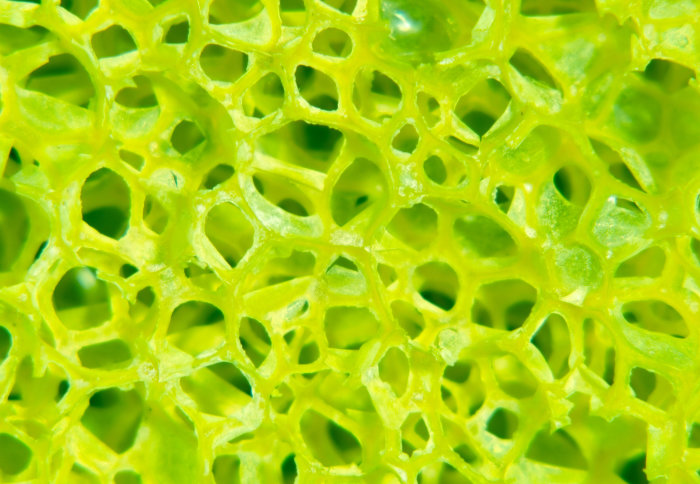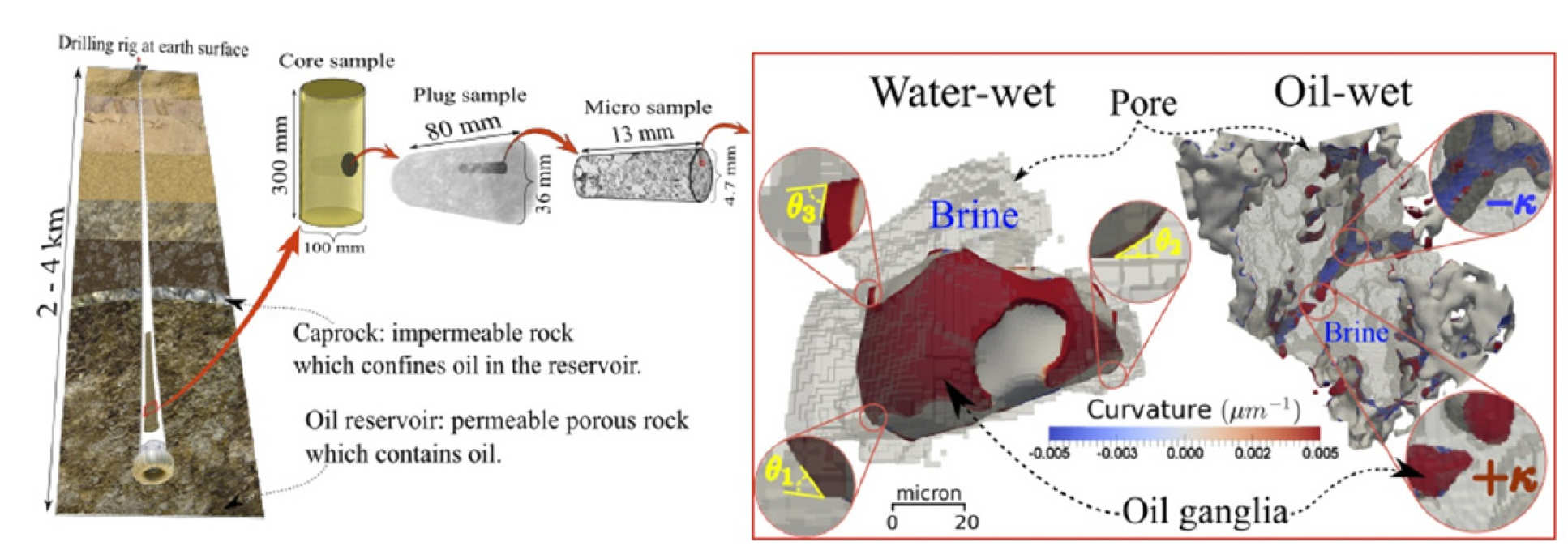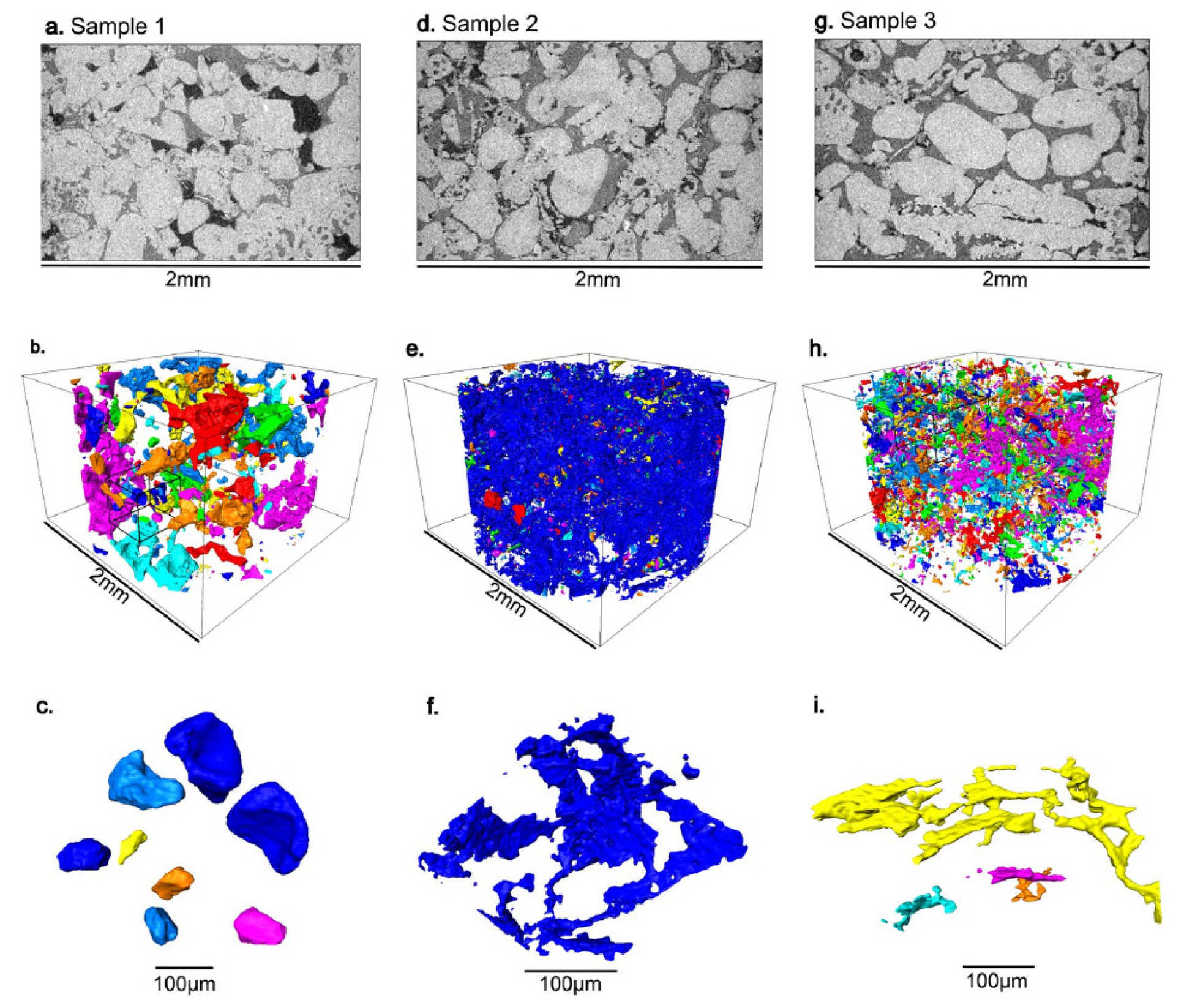

Researchers from Imperial have imaged rocks and the fluids within them to quantify the relationship between surface roughness and wettability.
Using state-of-the-art micron resolution three-dimensional X-ray microscopy, the group studied the interaction of fluids inside a porous limestone and its rough surfaces, to understand the effect of roughness on wettability – the affinity of fluids to the solid surface – and in turn, fluid flow.
“We have identified a distinct, ‘mixed wet’ state that can be designed to improve oil recovery, the performance of fuel cells, catalysts, and other porous materials.” Dr Branko Bijeljic Department of Earth Science & Engineering
The way that fluids are arranged in the sub-millimetre pore spaces of rock controls oil recovery, the movement of pollutants in groundwater, and determines how much carbon dioxide can be stored to mitigate climate change. In many important processes – from oil recovery and CO2 storage in aquifers, to gas exchange in leaves – flow is controlled by the interaction of immiscible fluids (those which don't form a homogeneous mixture when combined) with a rough surface.
For the first time, researchers from the pore-scale imaging and modelling group have looked inside rock to understand how surface roughness affects wettability. Rough surfaces repel water – consider raindrops falling off leaves, or how ducks stay dry. While this is well understood, nobody before has studied rough surfaces and their interaction with fluids inside a porous material.
This research allows scientists and engineers to find the optimal conditions for carbon dioxide storage, and to improve oil recovery. The same ideas could be used to study processes in other materials, such as catalysts, fuel cells, and leaves.
Previously, the interaction of fluids with a rough surface has been interpreted only on exterior surfaces, for example skin and leaves.
Wettability and roughness
By measuring the contact angles between oil, water and the rough surface on samples from an oil-producing reservoir, the researchers quantified the relationship between roughness, curvature and contact angle. Rougher surfaces are associated with lower values of the contact angle.

In materials with rougher surfaces, we see a greater range of contact angles and this variation is caused by the retention of water in crevices in the pore space.
The trillion barrel problem
The authors show that a mixed wet state (defined by a wide range of contact angles and interfacial curvatures) facilitates oil flow, improving oil recovery.
This contrasts with the existing assumption that a more water-wet state is better for oil recovery and potentially has huge implications for oil recovery: there are a trillion barrels of oil contained in carbonate reservoirs in the Middle East, sufficient to fuel the world for almost thirty years, if all the oil could be recovered. But to date, less than half has been extracted. The research implies that with careful management good recoveries from these reservoirs may be possible by injecting water to displace the oil.
Similarly, mixed wet media would also facilitate gas transport through membranes or in biological tissues.
In this research, novel methods have been developed for automated and efficient measurements of surface roughness (associated with pore wall curvature), and wettability characteristics such as contact angle and fluid/fluid interfacial curvature on images of pore space.
Earth Science and Engineering PhD student Ahmed Al Ratrout applied these methods inside carbonate rock images from an oil-producing reservoir in the Middle East to determine the relationship between roughness, contact angle and flow properties. From 54.2 million measurements of contact angle and curvature, the researchers quantified the relationship between roughness and wettability – that is, a relationship between surface roughness and contact angle.
The limestone samples from waterflood experiments performed by PhD student Amer Alhammadi were classified as oil-wet, mixed-wet or water-wet (Figure 2). More water-wet conditions are associated with rougher surfaces.

This project builds on a twenty year pore-scale imaging and modelling activity in the Department of Earth Science and Engineering led by Prof Martin Blunt and Dr Branko Bijeljic.
Study author Dr Bijeljic says: “We have identified a distinct, ‘mixed wet’ state that can be designed to improve oil recovery, the performance of fuel cells, catalysts, and other porous materials.”
The researchers’ work is likely to inspire further studies in a broad range of fields, from hydrocarbon recovery to fuel cells, catalysis, biology and material science, where wettability plays a key role on the fluid behaviour.
Prof Martin Blunt says: “We can now look inside materials and see the fluids within them. We can show how the arrangement of fluid, the way fluids flow and the amount that can be recovered is influenced by the roughness of the solid surface and the natural affinity of the water to the rock surface. The insights obtained from this work can be used to design optimal condition for recovery and storage in underground rock, or aid the development of efficient catalysts or fuel cells.”
The research was published in the journal Proceedings of the National Academy of Sciences on 17 August 2018 and has been conducted as part of an Abu Dhabi National Oil Company (ADNOC) sponsored project on reservoir-condition pore-scale wettability determination in reservoir rocks.
Article text (excluding photos or graphics) © Imperial College London.
Photos and graphics subject to third party copyright used with permission or © Imperial College London.
Reporter

Victoria Murphy
Institute of Global Health Innovation



